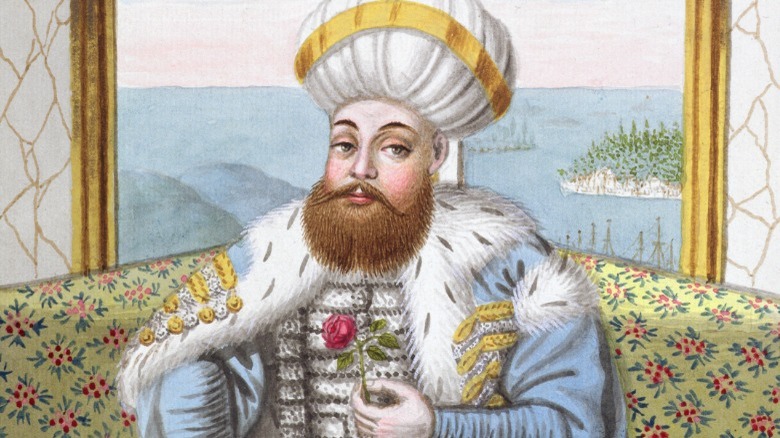Who Is Mehmed From Rise Of Empires: Ottoman And What Did He Really Conquer?
Any fan of the Netflix documentary section has likely come across numerous historical documentaries presented alongside all the riveting true crime programs. The streamer has specialized in docudrama historical programs covering everything from the Roman Empire to the fall of Tsarist Russia in the early 20th century. With a mixture of scripted and acted scenes interspersed with interviews and commentary from influential historians and scholars, these nonfiction shows help to bring history alive. In 2020, the platform released "Rise of Empires: Ottoman," which tells the story of the long-lasting Middle Eastern realm that lasted from approximately 1300 CE to the early 20th century (via Britannica).
The program chooses to skip most of the events that defined the first 140 or so years of the powerful kingdom by jumping to the accession of Mehmed the Conqueror (Cem Yiğit Uzumoglu) in the 1440s. This is the monarch who largely defines historical accounts of the territory, even though there were numerous sultans before him. So who exactly is this prominent ruler of the Ottoman Empire, and what did he conquer to garner such a domineering moniker?
Sultan Mehmed II conquered Constantinople
Sultan Mehmed II was a young and influential ruler of the Ottoman Empire across two different reigns in the mid-15th century. He first came to the throne during the summer of 1444 at the age of 12 upon the abdication of his father Sultan Murad II (per World History Encyclopedia). The first rule of the absolute monarch was defined by his victory in a battle against a crusade led by Hungarian soldier John Hunyadi, which led to a disagreement with a cardinal of Pope Eugene IV's, which brought about the return to the throne of Mehmed's father Murad II in 1446. The sultan's military prowess and leadership skills as an adolescent were markers of things to come in his memorable second reign.
In 1451 after the death of his father, his second round of leadership included the conquest of Constantinople which directly led to the fall of the Byzantine Empire in 1453 after over a millennium of rule. In what can be easily compared to the conquests of the equally young Alexander the Great during Antiquity, his vanquishing of opponents became numerous. According to TheOttomans.org, the second Sultan Mehmed would go on to vanquish enemies in Serbia, Greece, the Empire of Trezibizond, Wallachia, Bosnia, Karaman, and Albania, including several Venetian coastal properties. All of these lands were won by his strategized battles, many of which he personally participated in.

